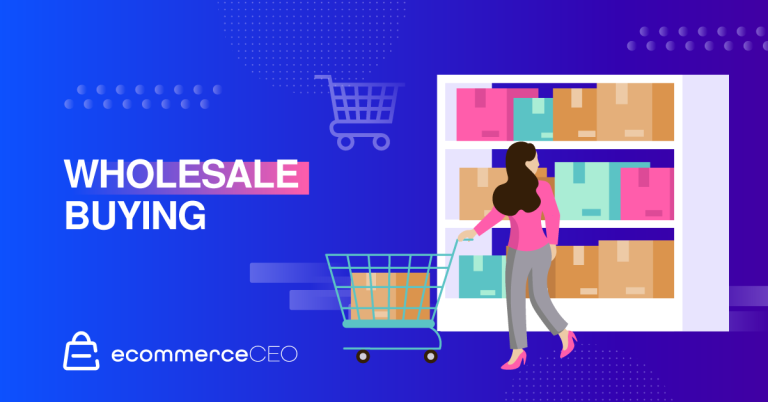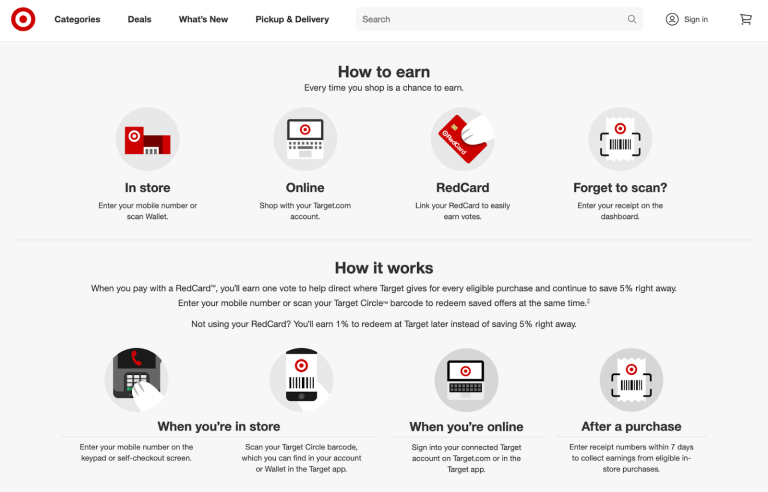Last Updated on December 9, 2022
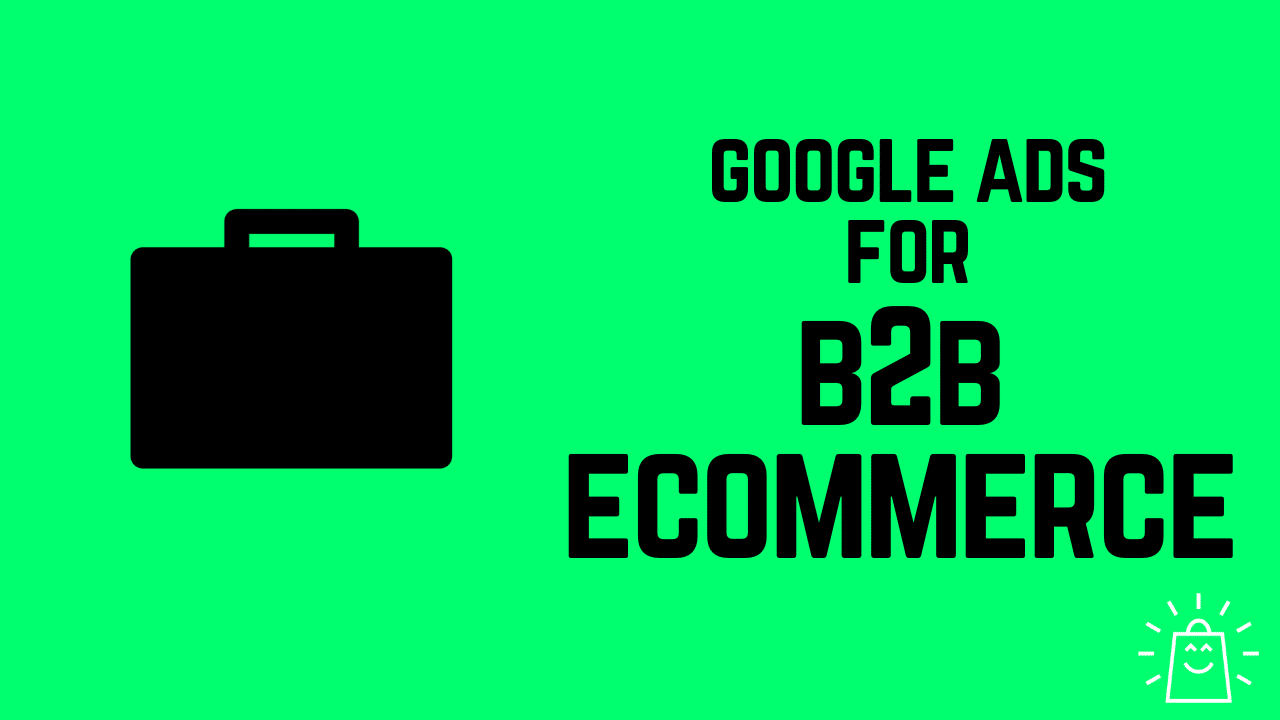
If you’re using Google Ads to sell to businesses, you can use many of the strategies and tactics that you would use to target consumers (B2C).
But in B2B ecommerce, there are also unique challenges that require a different approach.
So in this article, we’ll look at those challenges, and I’ll show you how other companies are dealing with them!
How Does Google Ads Work For B2B Ecommerce?
In B2B marketing, Google Ads is unique because it covers the whole buying cycle. From brand awareness, to lead generation all the way to sales-focused campaigns.
- Google search results
- Shopping tab of the search results
- Gmail
- 3rd party websites
- YouTube
Each of these placements requires a different campaign type. But they all share the same underlying mechanic, you’re paying Google every time someone clicks on your advertisement.
How much you’re paying depends on where you want your ad to show, and who you want to reach.
Interesting Campaign Types for B2B Ecommerce
Like I said before, Google Ads is a big platform and there are many opportunities to reach and sell your products and services to other businesses.
But not all campaign types are equally easy to start with and get going. So in this section, I’ll start with the easiest ones and then go down the list to cover more challenging ones.
Google Search Ads for B2B Ecommerce
When someone types a search into a search engine like Google, you can not only understand what product they’re looking for but also where they currently are in the sales cycle.
Then you can adapt your ad copy and offer to be most effective.
If you’re selling fasteners, and someone searches for “fasteners”, you might pitch them your quiz/tool to help them select the right product for their specific application. You might use this for lead generation, and build sales indirectly.
If on the other hand, they’re looking for a “3m dual lock reclosable fastener sj3560”, you can send them straight to that product page!
Here is an example of a Search Ad for Webstaurant Store, a professional kitchen supplies.
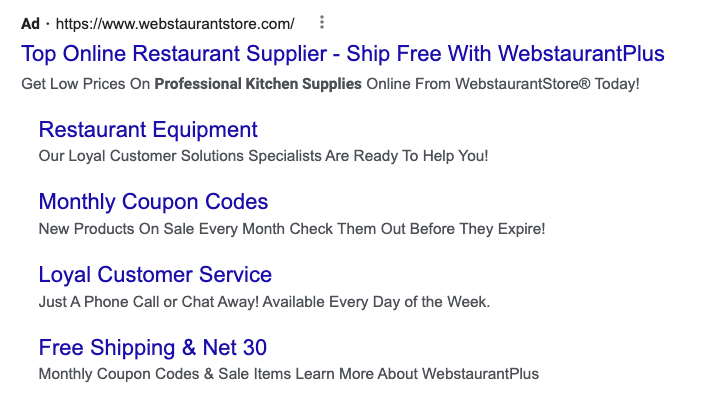

(You can also run Search Ads as part of a Performance Max campaign, see below)
Google Shopping Ads for B2B Ecommerce
If users are searching for your products, another great campaign type to try is Google Shopping Ads.
These are the ads with a product image that you can find in the Google search results.
To start running these ads, you need to connect your online store to Google Merchant Center, a free tool by Google. Through this connection, you’re able to send all of your product data to Google, usually with a product feed.
Then Google Ads is able to process that information to create Shopping ads.
Here is an example of Shopping Ads for a couple of B2B sellers:
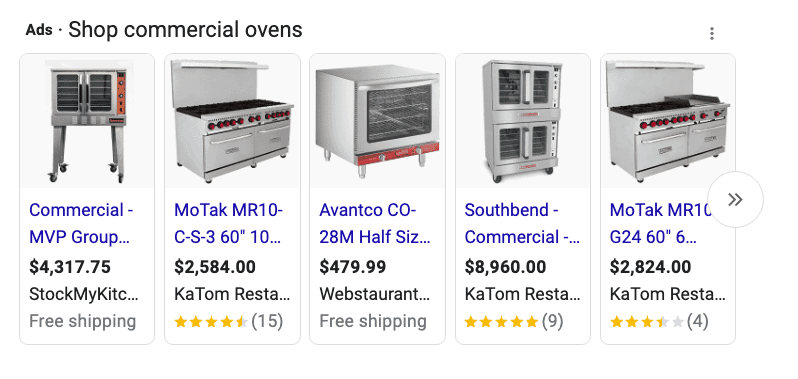

A good thing about Shopping ads is that they are relatively easy to configure. You only need to upload your product feed and Google will generate the ads for you.
(You can also run Shopping Ads as part of a Performance Max campaign, see below)
Performance Max Campaigns for B2B Ecommerce
Performance Max campaigns are a mix of different campaign types.
It will show your ads in the search results (Search and Shopping Ads), but also create banner ads that run on the Display network (we’ll cover this next).
This campaign drastically simplifies the setup, but it’s also very limiting.
Especially in B2B ecommerce, having control over which products show up for which search queries can make a huge difference.
So for that reason, I would caution against using this campaign type, and opt for one of the other options.
Display Ads for B2B Companies
Besides showing your ads on the Google search results pages, you can also run ads on the Google Display Network.
With Display ads, you’re able to show banner ads on websites that are opted into Google’s Display Network. This is a very large collection of all kinds of websites ranging from Reddit to The Huffington Post.
Take a look at this Display Ad from Uline:
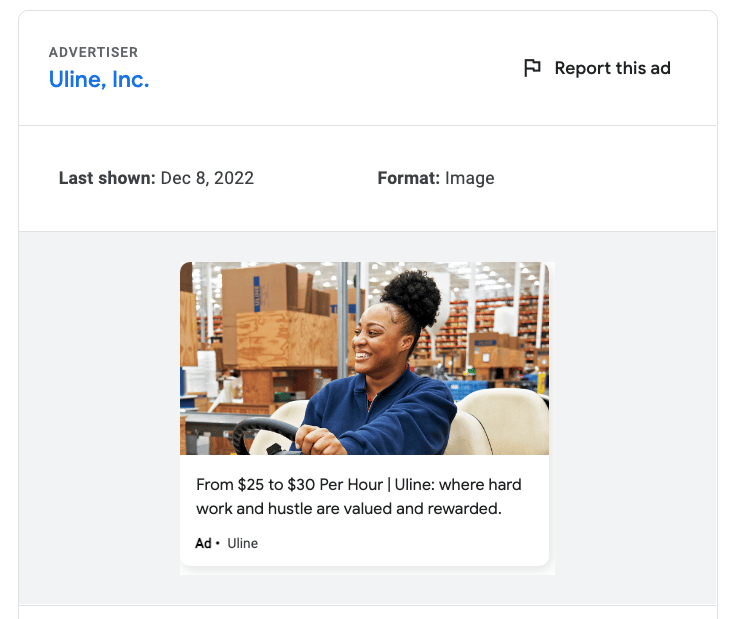

The big difference with Search and Shopping Ads is that clicks on Display Ads are VERY cheap in comparison.
Display campaigns have HUGE potential. You can literally spend hundreds of thousands of dollars PER DAY just on this campaign type.
The tricky part is to get them to work. Most of the placements for these ads tend to be very low quality. And the Display Network also faces issues like invisible ads and fraud.
To get them to work, you need to nail the following:
- Targeting: who will see this (pick the right options from the many options that Google offers)
- Creative: what do you show in your display banner
- Bidding: how much are you paying per click?
- Funnel: where are you sending people? Is this the most effective URL?
I’ve tried running Display Ads for B2B ecommerce companies, and I haven’t been very successful with it. The returns are very often too low, even if the clicks are 100 or sometimes 1000 times less expensive!
The only time we got the campaigns to perform to an acceptable level, was when we used this campaign type for b2b lead generation, and not straight-up product sales.
For example, we would create ads to promote a short guide or send people to a quiz. And then make sure everything is well integrated with the rest of the site and product catalog!
YouTube Ads for B2B Companies
The last campaign type is YouTube Ads.
There are a bunch of other campaigns that are also able to show ads on YouTube. That can be Search, Shopping, and Display ads.
But in this section, I want to talk about YouTube Ads, which are exclusively video ads.
Of all campaign types, this is probably the hardest one to make work. That’s because having the right creative plays such a vital part in a campaign’s success. You can’t create one video and be done with it.
To be successful you need to test a lot of different videos and find the most effective audiences to show them. It’s a tough nut to crack but can be very lucrative if you succeed.
So if you have created your videos, you need to upload them to YouTube.
Next, you can use these videos to set up a campaign through Google Ads by choosing one of the many targeting modes that Google offers for YouTube.
These are very similar to the targeting options that are available for Display Ads.
Here is an example of a YouTube Ad for Office Depot, an office supplies company:
[embedded content]
6 Unique Challenges That B2B Ecommerce Companies Face
By now, you should have a pretty good idea of what’s possible with Google Ads.
The goal of this section is to dive a bit deeper into the specific challenges that B2B ecommerce businesses face.
Challenge #1 – Long and complex buying cycle
Unlike in B2C (business to consumer), buying cycles in B2B often involve a lot more people.
This might mean you can have different people for the following:
- Who will use the product
- Who negotiates the price of the product
- Who makes the final decision about the purchase
- Who pays for the purchase
The more expensive the product, the more people will be involved and the longer it can take to bring the sale to a conclusion.
If you’re in B2B ecommerce, that means that you need to have internal operations to work with all of these functions.
And in Google Ads, that long buying cycle might make it a lot harder to judge whether or not a campaign is working.
Someone might click on an ad today, but it might take them 12 weeks to actually purchase.
You need to make sure you can capture that sale and its value, and tie it back in some way to the click.
Integration with your CRM, importing offline conversions, call tracking and the right attribution models will be essential to getting this part right.
Challenge #2 – Distinguishing consumers from businesses
Most of the time, B2B ecommerce is focused on serving businesses as customers.
Therefore it often doesn’t make sense to sell to consumers.
In Google Ads, that’s easier said than done.
If someone is looking for “masking tape”, it could be a consumer, but it might also be a purchaser of a big painting company.
If your ad looks relevant to a consumer, they will click on it, which means you will be charged.
But then if the conditions on your site scare away individual customers (as they should), you won’t make the sale and will likely lose money with your advertising.
There is no one size fits all fix, but the better you can communicate that you’re selling to businesses, the fewer consumers you’ll attract.
You can do this by focusing on search queries that your target audience might use. For example, target the search query “S-6538” (which is the product number of a specific masking tape) instead of “masking tape”.
A second way to deter consumers from clicking on your ads is to show in your ads that you’re targeting businesses. You can use certain phrases like “Wholesale discounts”, or adjust the prices to only sell 10 or 100-packs, something a normal consumer would never need.
Challenge #3 – Public pricing
In B2B environments, pricing is a lot more variable.
Depending on the quantities or contracts that certain businesses might get into, the price can be very different.
That makes it hard to display a public price on your site, something which is essential if you want to run Shopping Ads.
At the same time, you want to make it clear that under certain conditions, there is a better price available.
Another pricing-related issue is that if you’re dealing with price limitations and MRSP (manufacturer-recommended selling price), it can also be challenging to compete effectively with competitors that are breaking the rules.
Challenge #4 – Dealing with “offline” payment options
Customers expect flexibility when it comes to payment options in a B2B transaction.
If the payment is processed online, it’s usually pretty easy to link with the right-click in Google Ads.
But if a payment is made through something like a wire transfer, no money is immediately exchanged.
That’s when you need a way to indicate when a sale has happened, in order to optimize your campaigns accordingly.
Challenge #5 – Deep and complex inventory with lots of product variations
The amazing thing about the internet is that it allows you to carry a very wide inventory.
TVH parts, a company that sells industrial parts, claims to have 46 million different SKUs:
They’re probably not going to run all of them as Shopping Ads, but dealing with product catalogs of 10,000 SKUs can be challenging.
It calls for a very good product selection to make sure you balance uniqueness and popularity. There is no point in adding products that only 1 person per year would need or search for!
Challenge #6 – Low amount of high-value orders
Average order values in B2B ecommerce are often a lot higher compared to B2C.
It’s not uncommon to have an order of $2,000.
If you’re running a small Google Ads campaign, missing one or two of those orders per month can be the difference between being profitable or losing money.
Trying to optimize a campaign with a small number of conversions is very hard.
The first option is to optimize for proxies of a sale like “started checkout”, or “add to carts”. Or look at metrics like “bounce rate” and “pages/session” to determine traffic quality.
This doesn’t always work, but it can help you get better insights.
The second way to really solve this is to increase the scale of your campaigns.
If a budget of $1,000 per month is getting you 4 sales, what happens if you can scale that budget to $20,000 per month?
In a few instances, this higher volume of sales (and other data), really helped to bring down the month-to-month variability.
Examples of B2B Ecommerce Brands Using Google Ads
To conclude, I want to show you a few more examples of the Google Ads that B2B ecommerce companies are running.
Office Depot
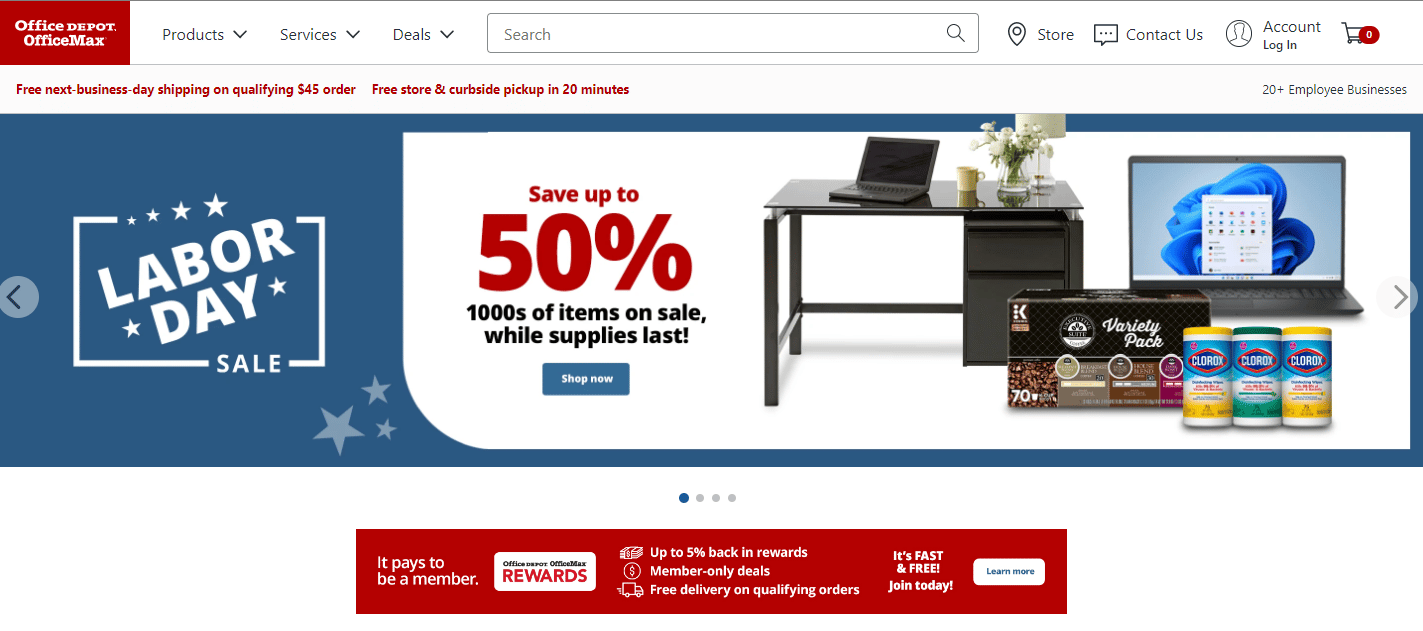

Which Google Ads campaigns does Office Depot use?
| Branded Search Ads | No |
| Generic Search Ads | No |
| Shopping Ads | No |
| Display Ads | Yes |
| YouTube Ads | Yes |
Example of a YouTube ad from Office Depot:
Katom
Katom is a restaurant supply store:
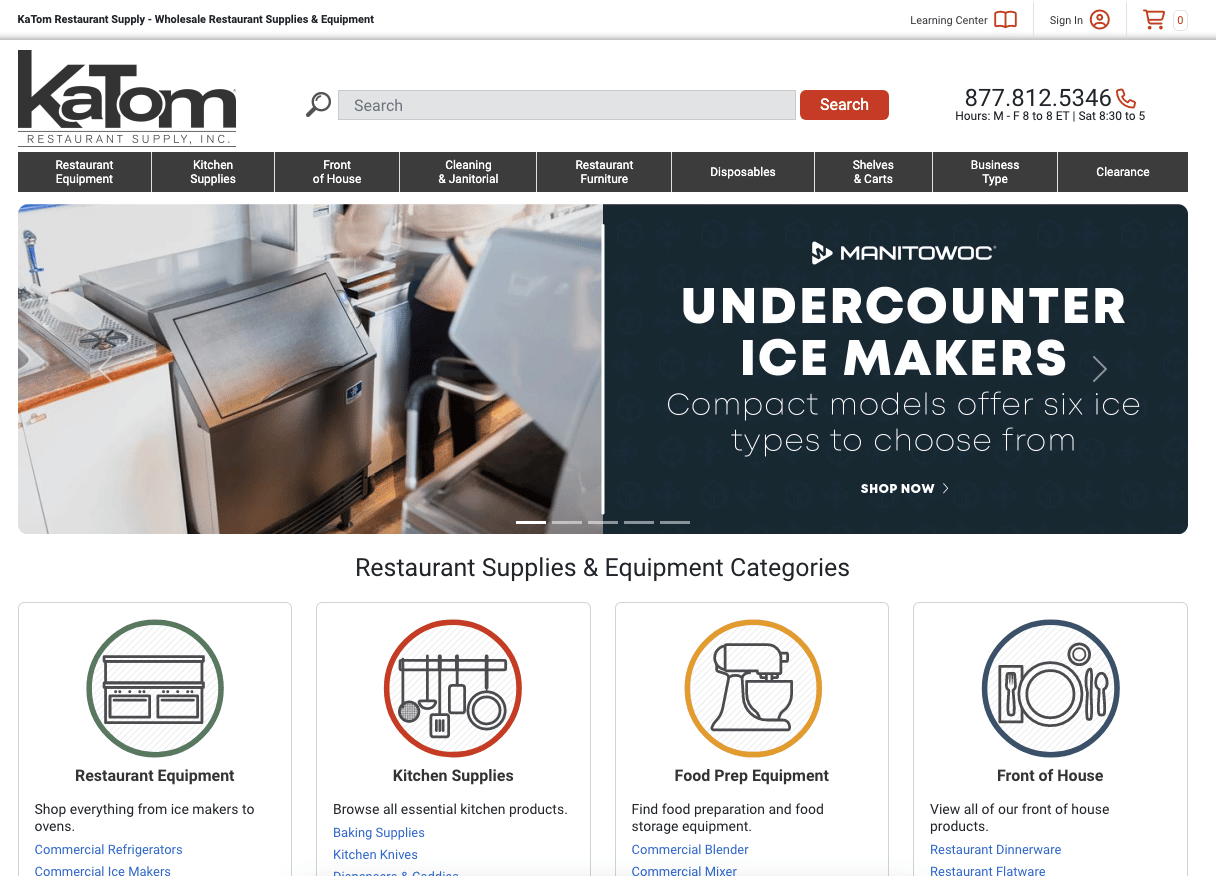

Here is a YouTube Ad that comes from one of the Performance Max campaigns that they’re running:
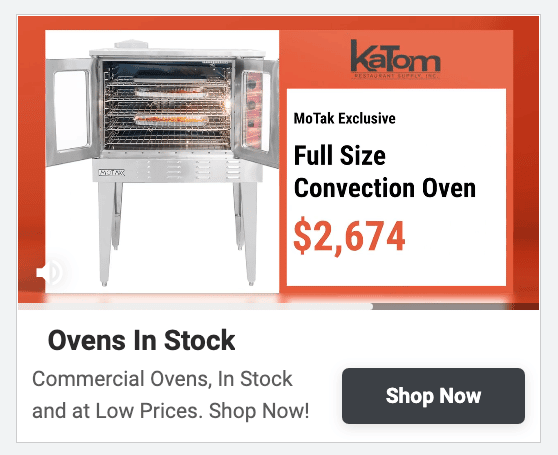

You can see the ad via this link.
Dell
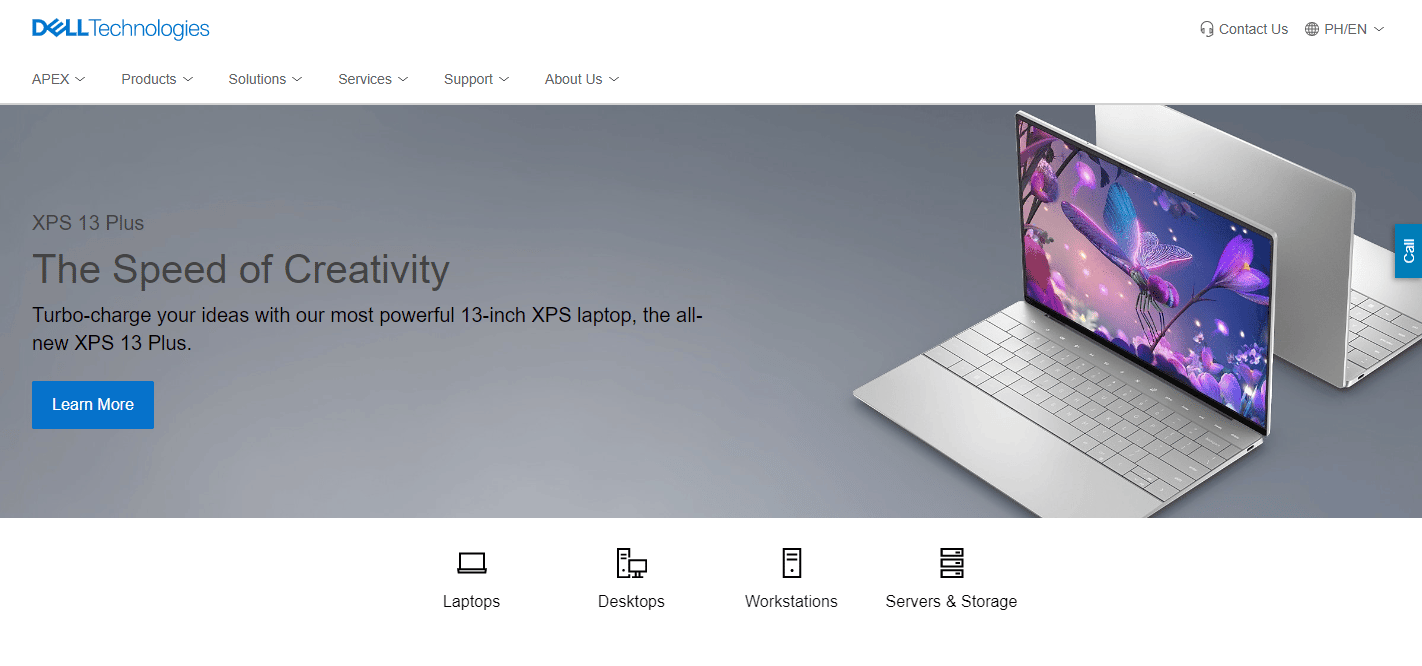

Example of a Display ad:


Uline
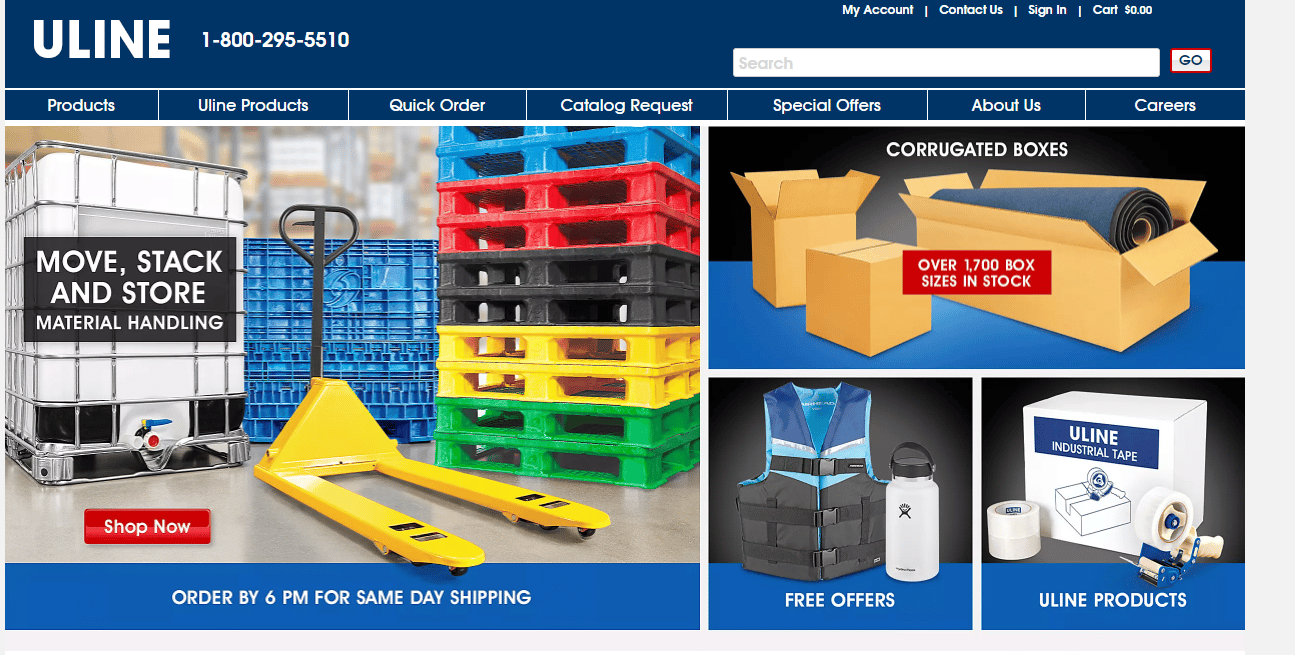

Example of a Shopping ad by Uline:
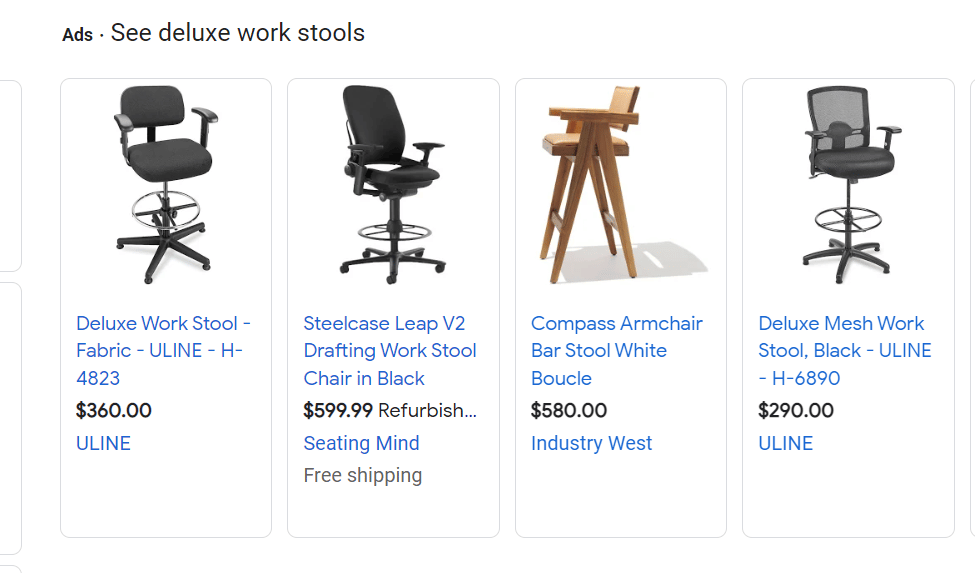

Doing Google Ads Right As In B2B Ecommerce
Selling to other businesses means you’re dealing with a lot more variables compared with B2C.
If you’ve got a good grasp on the basics of Google Ads and have a good response to the challenges mentioned above, you can scale quickly.
Because once you find a combination of campaign types that works for your business, it can lead to a stable channel you can build and further expand on.

